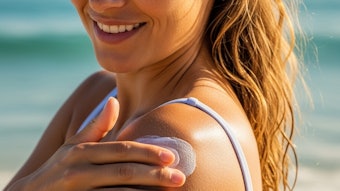Barrier function in the skin depends on ceramide lipids. Without them, the barrier degrades and signs of aging appear. This article reports on a botanical ingredient that has the unexpected property of stimulating ceramide synthesis in keratinocytes.
The Skin Barrier and Aging
As we age our skin changes. Some of the changes are due to the accumulated exposure to the sun’s ultraviolet rays, while other changes are intrinsic to skin.
A readily identifiable change is the decline of the barrier function of skin, as measured by increases in transepidermal water loss (TEWL). People of all ages regulate water loss from the skin; for example, on the inner forearm the rate is approximately 5 g/m2/h. Differences arise, however, when the barrier is challenged, such as when strips of stratum corneum are removed from the forearm skin by cellophane tape (Figure 1). The number of tape strips required to elevate TEWL to 20 g/m2/h (barrier strength) decreases with increasing age in a nearly linear fashion. The loss of barrier strength is about 30% in 30 years.
Key elements in the maintenance of the barrier function of skin are the ceramide lipids. Ceramides are pro– duced by a chain of enzymatic transformations of phospholipids. Ultimately, the ceramides are hydroxylated at two sites on the molecule, which serve as linkers to adjacent proteins such as kera– tin and involucrin. This interlocking of lipid and protein is central to the formation of the skin barrier. During aging, the ceramide content of the skin of the face, arms and legs declines, coincidently, by approximately 30% over 30 years. This decline in ceramides is likely the cause of the decline in barrier function, because the linking proteins involucrin and keratin do not change with age.










